Beach and ocean-goers urged to take rubbish home after several sick turtles found in a week
Anyone heading to the beach this summer are reminded to take their litter home after several sick turtles were found within days of each other. SEE THE VIDEO.
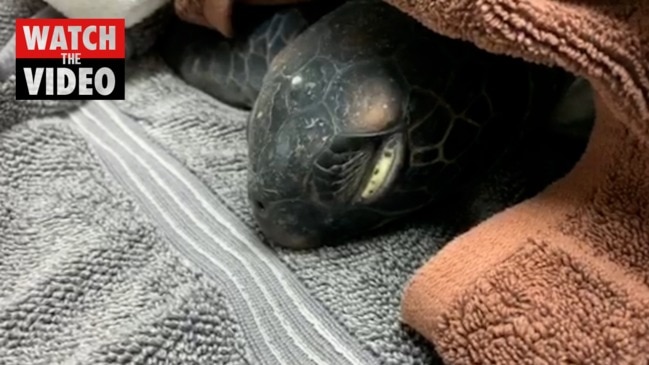
QLD News
Don't miss out on the headlines from QLD News. Followed categories will be added to My News.
WILDLIFE carers and veterinary staff want to remind anyone heading out on the ocean to take their litter home after several sick sea turtles were discovered in separate parts of the state.
At least three green sea turtles were rescued on the Sunshine Coast with two more found off the coast of Townsville in the past week alone.
All of the reptiles were found suffering from “floating syndrome,” meaning they were unable to dive for food due to their injury or illness.
Amanda Atkinson, 38, a veterinary nurse from the Animal Emergency Service (AES) said a kayaker came across a 9.3kg turtle floating on the Maroochy River in Maroochydore early on October 14.
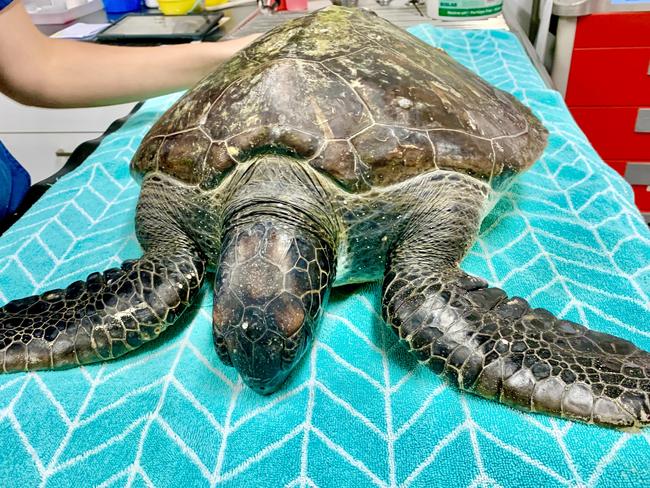
She said the kayaker flagged down another man on a boat, and they managed to get the turtle to the AES, on Tanawha Tourist Drive in Tanawha, just before 6am on October 14.
“Dr Bree (Debel), who was on that morning assessed the turtle to make sure there wasn’t any obvious injuries or opened wounds, and there wasn’t,” she said.
“We noticed the front half of the body, that’s not covered by the shell, was quite puffy.
“It wasn’t able to swim or submerge and dive. The most common reason that happens is because they’ve eaten something they shouldn’t have.
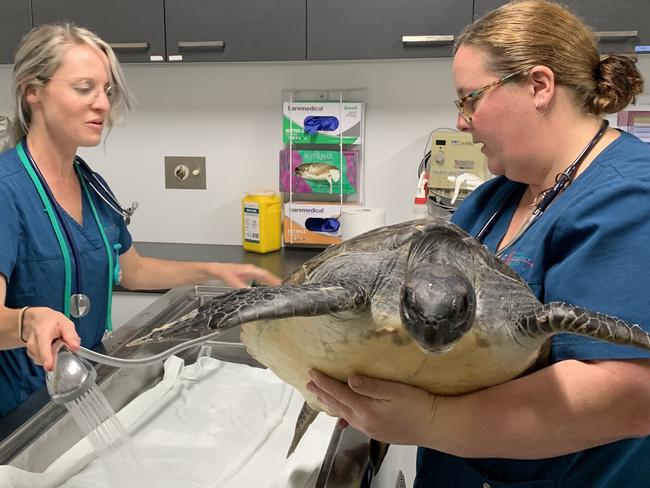
The juvenile was taken to SeaLife Moolaba, where Miss Atkinson said two other sick turtles had been brought in the same morning in a similar condition.
Veterinary nurse and reptile co-ordinator for North Queensland Wildlife Care, Trish Prendergast, said a family also found a 41cm, approximately 6kg green sea turtle was floating off Palleranda Beach in Townsville on Sunday.
“They noticed a turtle floating and that it couldn’t submerge,” she said.
“He brought it back to land … and called NQ Wildlife.”
Miss Prendergast said the juvenile turtle had a lot of barnacles on it and appeared to be starving.
“If you go fishing or go onto the ocean, make sure you take your rubbish home with you, as turtles eat jellyfish and floating plastic bags look like jellyfish,” she said.
“Other things they eat is balloons. When people let balloons go in the sky they pop and then turtles eat them.”
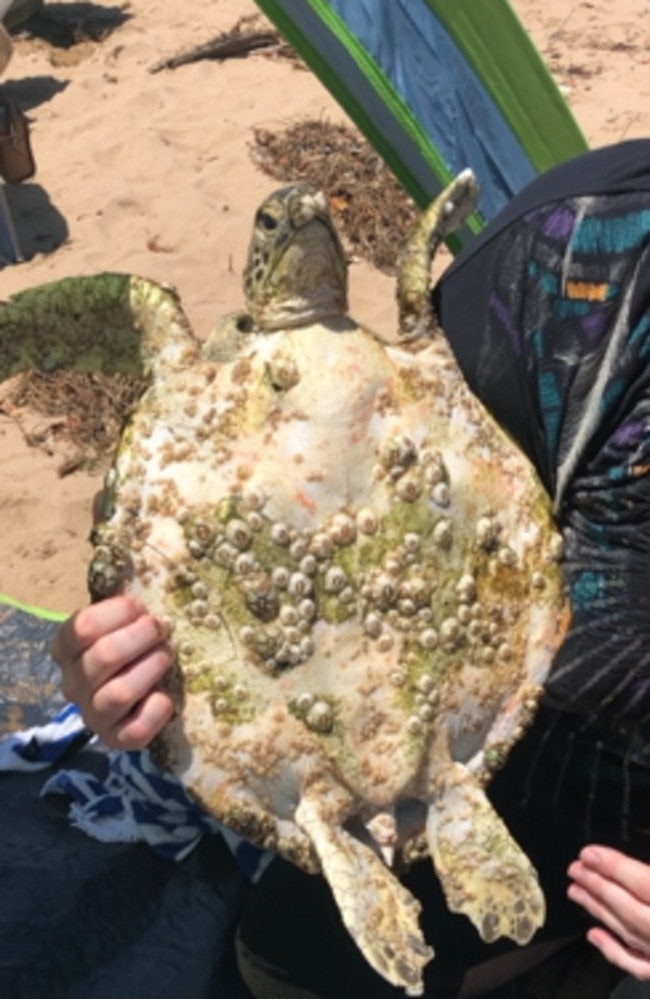
The sea creature was also quite skinny – so likely starving – and covered in barnacles, indicating she had been floating for some time, according to Miss Prendergast.
The reptile was taken by ferry to Magnetic Island and placed in the care of the newly-reopened Magnetic Island Network for Turtles (MINT).
Paul Groves, Director of Husbandry of Operations for MINT, said the juvenile was the second sick turtle they took in that day.
“The other one was found in the Ross River in Townsville,” he said.
“Both turtles had the same condition so are both in intensive care while we try to relax them and start our treatments.”
Mr Groves, 53, said it was still unknown as to whether the turtles had an infection or had eaten a foreign object such as a fishing hook.
“Sometimes they might get constipated with sea grass, they do get natural blockages as well as from plastic,” he said.
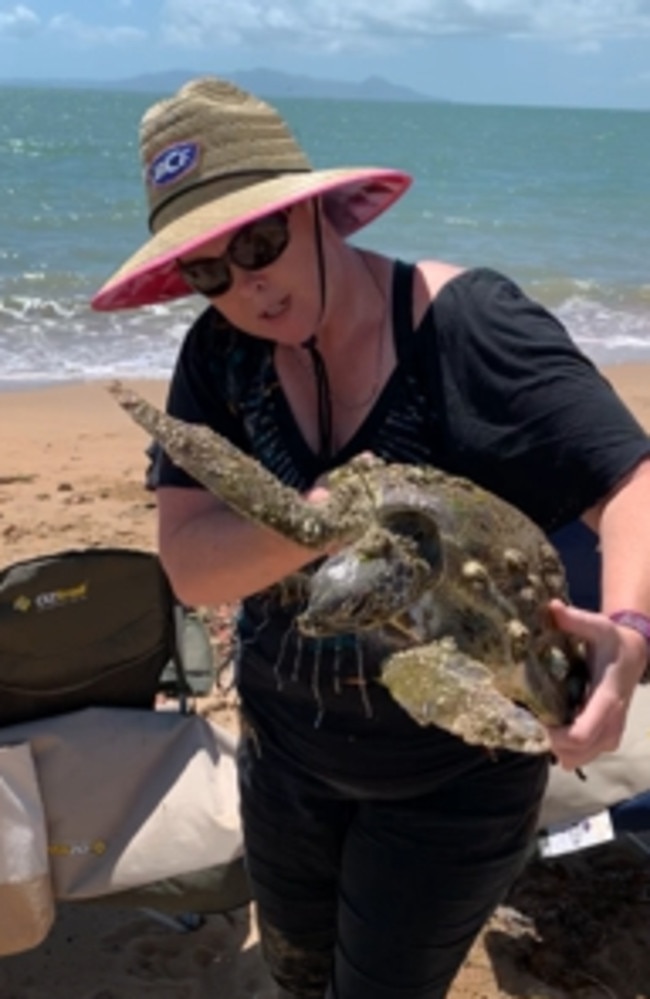
The marine scientist said he was happy with their recovery so far, though only the 15kg turtle found in the Ross River had started eating.
Magnetic Island Koala Hospital veterinarian, Ali Bee, has also treated turtles in the past and said floating syndrome was more common in cooler months.
Dr Bee, 54, said floating syndrome was often a result, or combination of, an intestinal blockage, pneumonia or a parasite.
“With floating syndrome … they’ll starve as they can’t dive for long enough or deep enough to get food,” she said.
“It means they’re way too buoyant, so they can’t physically get to the bottom.”
Dr Bee said turtles could survive for almost a year without food.
